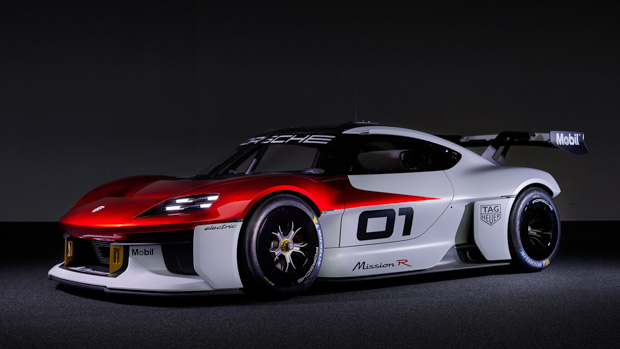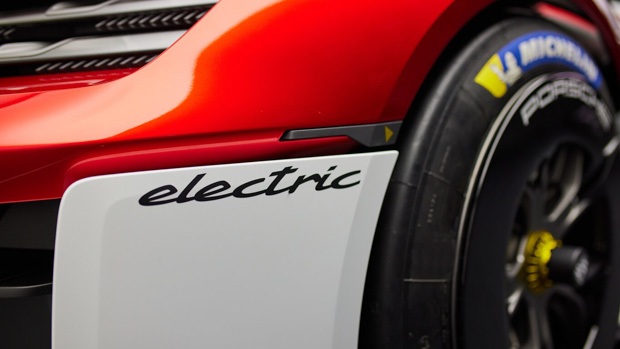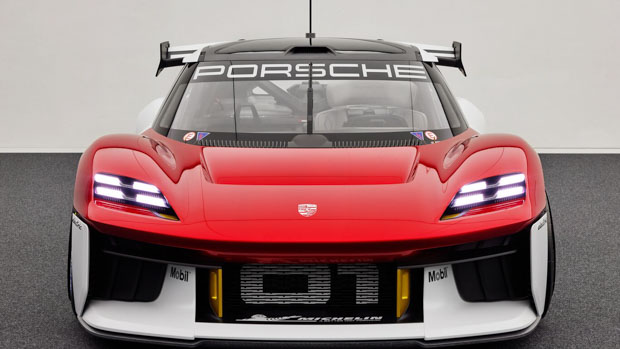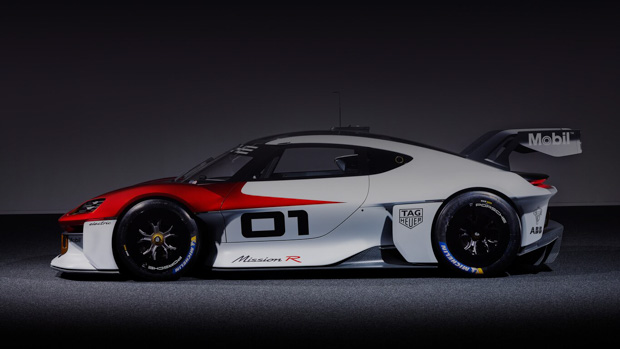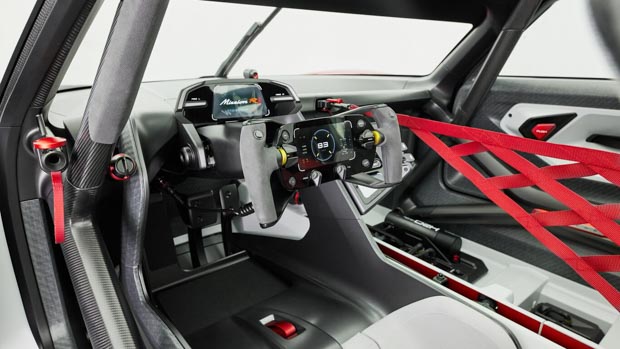-
Car Reviews
- Car News
-
Car Comparisons
Latest comparisons
- Chasing Deals
Amongst a sea of autonomous SUVs, Porsche has revealed a unique electric concept that is sure to get enthusiasts excited about the future.
Just when it was beginning to look like the attainable sports car was a lost cause, Porsche turned up to the IAA show in Munich with this radical Mission R concept that hints at the future of customer racing.
The Mission R concept looks straight out of a video game replete with a carbon fibre gooseneck spoiler, racing slick tyres, turbofans, a carbon fibre rollcage and a ludicrous ride height.
Basically every feature enthusiasts love, but those that rarely work on a road car – that’s because the Mission R is Porsche’s vision of what customer racing will look like in a CO2 neutral world.
It may have debuted as a track special, but it’s no secret that Porsche loves a special edition based on a racing car – just look at the success of the 911 GT3 and Cayman GT4. With the Mission R, you just need to mentally strip back the aero addenda and this racer to see the hints of next-gen Cayman.
The pair of direct oil-cooled electric motors are capable of producing 800kW of power in ‘qualifying’ mode. In ‘race’ mode, the power is throttled back to 500kW, though it’s still rapid with a top speed of 300km/h, and 0-100km/h sprint of 2.5 seconds.
“It’s indescribable; the immediate surge of power from the two electric motors is something you simply have to experience for yourself,” says Timo Bernhard, Porsche brand ambassador and former works racing driver who compared the Mission R’s straight line speed to the 919 Hybrid racecar.
Porsche says the power level makes the Mission R roughly equivalent to the 911 R Cup Car, for which the Stuttgart-based brand already has a huge following from customer racers.
To aid longevity the Mission R’s motors use a new type of cooling system. Instead of liquid flowing around the motors in a jacket, the Mission R’s cooling liquid comes into direct contact with the hot motor and batteries.
Porsche claims this technology is more efficient, allowing the car to run at full pace on track with heat soak kept at bay.
Powering the pair of motors is a 82kWh lithium-ion battery pack that has a capacity of 900 volts, 100 more than a Porsche Taycan and double that of a Tesla Model S.
A charge from 5-80 per cent takes as little as 15 minutes due to the 350kW DC fast-charging capacity. Although limited to a racecar for the moment, it’s not hard to see this high-voltage technology trickling into road cars.
Porsche has not claimed a WLTP range. Instead, the marque claims the Mission R is suitable for sprint races between 20-45 minutes in length.
Fitting any larger of a battery pack currently would increase the weight significantly. At 1,500kg, the Mission R is light by today’s standards, though fairly heavy for a racer.
Obviously this is a race car, but you don’t have to squint very hard to see what a related road car might look like. The proportions evoke a slinky mid-engined sports car, one that could sit next to the Taycan in the range and replace the current Cayman and Boxster.
Around the rear is a familiar full-width LED light bar which Porsche itself says hints that the Mission R will inform a new production model.
Porsche made the decision to use natural reinforced carbon fibre on the Mission R concept. The agriculturally produced Flax fibres cut CO2 emissions by 85 per cent compared to your average hunk of carbon fibre. This material features on the splitter, sideskirts and rear diffuser.
Jumping inside and the lightweight bucket seats catch the eye, as does the carbon fibre roll cage. The cockpit can be used as an on-the-go simulator, for drivers to practice lines while the Mission R is charging.
Latest news
About Chasing cars
Chasing Cars reviews are 100% independent.
Because we are powered by Budget Direct Insurance, we don’t receive advertising or sales revenue from car manufacturers.
We’re truly independent – giving you Australia’s best car reviews.
